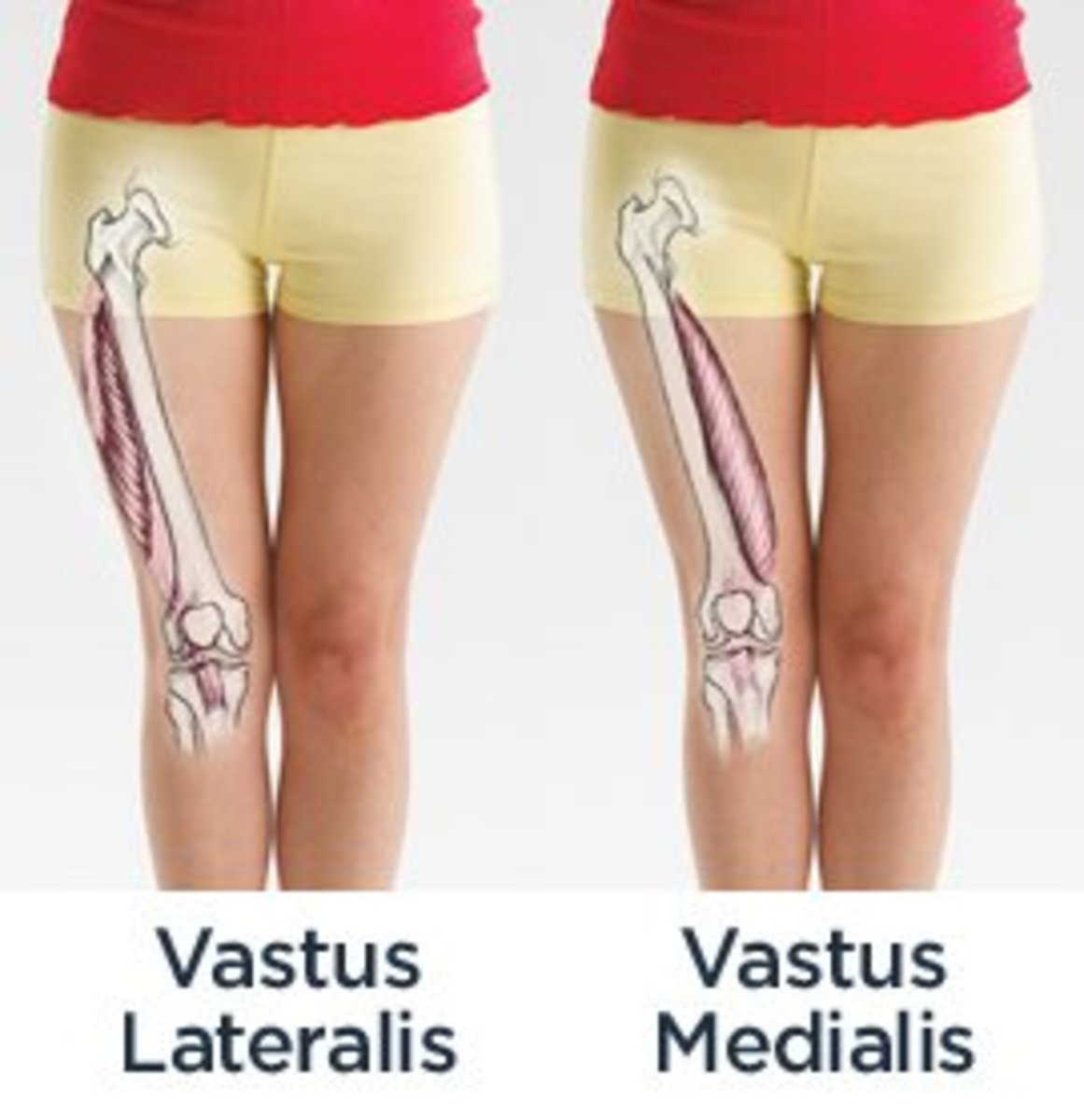Isometric contractions

Isometric Contractions
Isometric contractions refer to a certain type of muscle contraction where the muscle spindles are activated but the overall length of the muscle remains the same. For this to happen, during an isometric contraction, no movement occurs at the joint. In other words your muscle (or muscles) contract but your bony skeletal system doesn't move and therefore the overall length of your muscle (measured from its origin to its insertion) stays the same. Isometric contractions can be completed on their own without any equipment. However, one of the most effective ways to use isometric contractions is to combine them into a broader routine. For example you may choose do an isometric contraction at a 'sticking point,' like with a bar bell at 90 degrees of elbow flexion.
Deals from Amazon

How do isometric contractions occur?
The diagram on the right is useful in understanding how an isometric contraction can occur. The muscles within your musculoskeletal system are made up of muscle fibers grouped into fascicles which are encapsulated within three sheath layers (endomysium, perimysium and epimysium). Each muscle fiber is striated (represented by the red and white stripes in the diagram). These striations are due to the rows of filaments that move closer together when that portion of the muscle is activated (it may help to look at the red and white striped striated muscle fiber in the diagram like a piano accordion). When a muscle contracts those actin and myosin filaments are pulled closer together through the actin / myosin cross bridges. When a muscle contracts not all actin / myosin cross bridges area activated at the same time. Additionally, not all muscle fibres are activated at the same time. So during as isometric contraction, while some muscles fibers are experiencing a contraction (shortening), others will not be contracted (and instead will be lengthened). This allows the overall length of the muscle to remain constant during an isometric contraction.

Understanding Isometric contractions versus isotonic or isokinetic
At first it can be difficult to understand the difference between these three types of muscles contraction. As mentioned above isometric muscle contractions involve the 'same' (iso) 'measure' (metric) of muscle length.
Isotonic contraction refers to the 'same' 'tension' on the muscle. This means that the muscle is under the same tension throughout the contraction. Many exercises which people refer to as isotonic (most common free weight or gym apparatus exercises), are actually not technically isotonic. This is because there is some variation in tension on the muscle through joint range and during the acceleration and deceleration phases of the movement. Therefore the term auxotonic is perhaps a better representation of the type of contractions that are required for those exercises. Here is a page if you want to find out more about isotonic contractions.
Isokinetic contractions refer to the 'same' 'motion' of the muscle. This means that the muscle contracts (shortens) at the same speed. In other words the muscle length has the same rate of change throughout the movement. Isokinetic contractions are actually quite difficult to achieve without complex (and expensive) equipment. However, it can be useful and is used by many professional athletes and sporting teams, particularly during rehabilitation following an injury. Here is a page if you want to find out more about isokinetic exercises.
Can isometric contractions increase my muscle strength?
Yes, isometric contractions can be useful in strengthening your muscles. They can also be useful for building up some muscular endurance (for your core stability etc.). While it would be a missed opportunity to adopt an isometric exercise program on its own, without incorporating other types of exercise or strengthening activities, isometric contractions can be of great benefit. Personally, i have found isometric contractions to be of the most benefit as part of a core strengthening program (think of 'the plank' exercise), for joint stability (during shoulder rehabilitation programs etc.), or for increasing muscle strength at critical angles (perhaps in key body positions to avoid a being pinned if you were a wrestler). I find it can be useful to incorporate isometric muscle contractions into a conventional isotonic weights program. Combining isometric exercises and isotonic exercises can help you work your muscles to their maximum ability. For example you could add a pause during a bicep curl (say at elbow 90 degrees). There are limitless possibilities once once you start to combine an isometric and isotonic exercise program. To shorten your workout time and increase your core stability you can often use a stability ball (also called a swiss ball) or a bosu ball (half of a swiss ball with a flat base).
What are the benefits of isometric contractions?
There are many benefits, these include:
Isometric contractions allow you to work a large proportion of available muscle fibres at any given angle where the contraction is performed.
Strength gained from using isometric contractions in disadvantageous joint angles (usually the hardest part of a conventional repetition) has carry over to the other angles of movement throughout the range.
Generally, isometric contractions are be performed in a low impact manner without high impact forces on joint surfaces or ligaments. This can help reduce the chance of injury or assist during rehabilitation.
Isometric exercises allow you to prolong the time that each muscle fiber is under tension. This can lead to more micro damage at the individual muscle fiber level, as this repair it will lead to hypertrophy (bigger muscles).
Isometric contractions can be performed anywhere and are not restricted to the gym environment.
Important warning for isometric contractions
Isometric contractions can cause a temporary increase in blood pressure. This is no concern for most people. However, anyone suffering from heart disease or high blood pressure should check with their doctor before starting an exercise program involving isometric contractions (if you suffer from these conditions it is probably not a bad idea to check with your doctor before starting any new exercise program).
Additionally, during pregnancy blood flow is altered due to the physiological demands and mechanical weight of the growing fetus. Hence, strong isometric contractions are not advised during pregnancy. If you are pregnant it is a good idea to seek specific advice from a suitably qualified health professional before commencing an isometric exercise program.
Remember... keep breathing during isometric contractions! When you are doing isometric exercises (or any resistance exercises), for some reason it is common to want to hold your breath automatically. This is not a good idea. Holding your breath (like doing a valsalva maneuver) increases the pressure in your abdominal cavity, which is not the intention of the exercise and can be harmful in some cases. Instead, it is better to continue steady breathing throughout the duration of an isometric contraction.
Useful links
These links either have isometric exercises on their own or isometric exercises incorporated into a broader routine or exercise (isotonic contractions / resistance band training etc.). They have video instructions that you can watch online.
- Isometric Exercises
This page has isometric exercises for beginners, as well as some more difficult ones (from a guy who does mixed martial arts training). - Core isometric exercises combined with resistance band exercises
This page has a whole bunch of exercises that combine resistance bands with isometric contractions to strengthen your core and improve your joint stability. - Isokinetic contractions explained
This page explains isokinetic contractions and the benefits of isokinetic testing and training. It has some great example videos. - Dumbbell pullover
The dumbbell pullover is an awesome old school exercise. Here is instructions with video and key tips...
Isometric hold in mid range bicep curl position.
Notice that during the isometric hold there is steady breathing. At the completion of the isometric hold, a set of alternating bicep curls is performed. Another option would be to do the alternating bicep curls first until your muscles are already fatigued, then do the isometric hold. This latter option would allow you to complete the concentric and eccentric phases of the alternating bicep curl with good form. Then fatigue your muscles to their limit with the isometric contraction.







